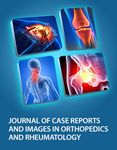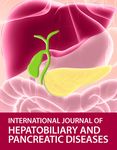Central diabetes insipidus as a manifestation of cerebral
←
→
Page content transcription
If your browser does not render page correctly, please read the page content below
Int J Case Rep Images 2021;12:101241Z01NM2021. Mhaskar et al. 1
www.ijcasereportsandimages.com
CASE REPORT PEER REVIEWED | OPEN ACCESS
Central diabetes insipidus as a manifestation of cerebral
edema in a patient with SARS-CoV-2 infection
Nilesh Mhaskar, Zachary A Gilbert
ABSTRACT How to cite this article
SARS-COV-2, the virus responsible for coronavirus Mhaskar N, Gilbert ZA. Central diabetes insipidus
disease 2019 (COVID-19), has been associated with various as a manifestation of cerebral edema in a patient
clinical manifestations ranging from an asymptomatic with SARS-CoV-2 infection. Int J Case Rep Images
carrier state to pneumonia and respiratory failure, 2021;12:101241Z01NM2021.
encephalopathy, thromboembolic events, and death. The
objective of this case report is to highlight an additional
complication possible with COVID-19: central diabetes Article ID: 101241Z01NM2021
insipidus (CDI) in the setting of fulminant cerebral edema.
A 66-year-old male presented with cough, shortness *********
of breath, and fever and was found to have COVID-19 doi: 10.5348/101241Z01NM2021CR
pneumonia. During the hospitalization, he developed
acute hypernatremia with a significant increase in urine
output associated with low urine osmolarity. Central
diabetes insipidus was confirmed by administration of INTRODUCTION
desmopressin. The presence of CDI along with worsening
neurologic changes prompted cerebral imaging revealing COVID-19, also known as severe acute respiratory
intraparenchymal hemorrhages and significant edema. syndrome coronavirus 2 (SARS-CoV-2) was identified in
To our knowledge, this is the first report of CDI caused Wuhan, China in December 2019. Fever, cough, dyspnea,
by cerebral edema in a patient with COVID-19. We and bilateral infiltrates on chest imaging indicative of
present this rare association to help alert clinicians to pneumonia are the most common presenting symptoms
the possibility of polyuria and CDI as a sign of potentially [1]. Additional complications include acute respiratory
fatal neurologic sequelae of COVID-19. distress syndrome (ARDS) [2], arrhythmias, acute
cardiac injury and shock [3], thromboembolic events
Keywords: Central diabetes insipidus, Cerebral edema, [4], anosmia and ageusia [5], and gastrointestinal
COVID-19, SARS-COV-2 manifestations such as diarrhea and nausea/vomiting [6].
Intracranial complications such as cerebral edema have
been described, but to our knowledge there have been
no reported cases in which specific renal complications
heralded the development of neurologic manifestations.
We present a case in which a gentleman contracted
Nilesh Mhaskar1, MD, FASN, Zachary A Gilbert2, MD COVID-19 through close family contact. During his
Affiliations: 1Renal Physicians Inc., 500 Lincoln Park Blvd,
hospitalization, he developed acute severe hypernatremia
Kettering, OH, USA; 2Department of Internal Medicine, Ket- leading to the diagnosis of CDI which ultimately led to the
tering Medical Center, 3535 Southern Blvd, Kettering, OH, discovery of fulminant cerebral edema. We believe this
USA. unique case will help inform clinicians about the potential
Corresponding Author: Nilesh Mhaskar, 500 Lincoln Park for renal and neurologic conditions that may affect the
Blvd, Kettering, OH 45429, USA; Email: nmhaskar@ clinical course and prognosis of patients with COVID-19.
gmail.com
CASE REPORT
Received: 24 February 2021
Accepted: 07 June 2021
Patient is a 66-year-old male with past medical
Published: 16 July 2021
history significant for gastroesophageal reflux disease,
International Journal of Case Reports and Images, Vol. 12, 2021. ISSN: 0976-3198Int J Case Rep Images 2021;12:101241Z01NM2021. Mhaskar et al. 2
www.ijcasereportsandimages.com
hypertension, atrial fibrillation status post-radiofrequency head which revealed intraparenchymal hemorrhages and
ablation, and benign prostatic hyperplasia who presented significant edema (Figure 2). Neurosurgery and neurology
to the emergency department with fever, shortness of were consulted but no neurosurgical intervention was
breath, and cough. Approximately one to two weeks prior deemed feasible given these significant findings. Transfer
to admission, his wife was diagnosed with COVID-19 and to the tertiary care center for ECMO was cancelled due
the patient had been in close contact with her without to futility. Goals of care were changed to comfort care
any personal protective equipment. One week prior to measures only and he expired shortly thereafter.
admission he developed fever, chills, myalgias, cough
and shortness of breath which progressively worsened.
Three days before admission, he reported intermittent
diarrhea associated with nausea and vomiting. On
arrival to the emergency department, the patient was
found to be hypoxic with oxygen saturation 71% on room
air requiring up to 6 liters of oxygen administered via
nasal cannula. COVID-19 was confirmed through the
qualitative detection of SARS-CoV-2 viral RNA by rapid
nucleic acid amplification.
Patient was started on dexamethasone, remdesivir,
empiric ceftriaxone and azithromycin, and convalescent
plasma, with ruxolitinib added shortly thereafter. Despite
these interventions, however, the patient’s respiratory
status continued to deteriorate, initially requiring
non-invasive ventilation and ultimately endotracheal
Figure 1: Urine output with serum sodium levels during
intubation with mechanical ventilation on Hospital Day hospitalization. DDAVP was administered on Day 10.
#4. On Hospital Day #5, he developed non-oliguric acute
kidney injury with a creatinine of 2 mg/dL thought to
be secondary to acute tubular necrosis, which remained
unchanged over the course of his hospitalization. Over the
next few days he became increasingly hypoxic associated
with worsening bilateral infiltrates and markedly
hypertensive requiring nicardipine infusion to control his
blood pressure. Vancomycin and piperacillin/tazobactam
were added out of concern for possible superinfection.
Due to continued severe hypoxic respiratory failure
despite maximal ventilatory support, discussions were
begun to transfer the patient to a tertiary facility for
extracorporeal mechanical oxygenation (ECMO).
While arrangements were being made for a Figure 2: CT of head without contrast showing multiple small
cerebral parenchymal hemorrhages bilaterally with diffuse
possible transfer, the patient developed sudden acute
brain swelling.
hypernatremia to 167 mmol/L associated with significant
increase in urine output, which persisted despite cessation
of intravenous furosemide. Nephrology was consulted for
evaluation of possible diabetes insipidus. On the day of DISCUSSION
consult, his repeated sodium was 170 mmol/L and the
patient had 6.5 L of urine output for the 24 hours prior. In SARS-COV-2, the virus responsible for coronavirus
the presence of this significant hypernatremia, his urine disease 2019 (COVID-19), can cause a wide range of clinical
osmolarity was found to be 170 mOsm/L confirming manifestations from asymptomatic carrier to multiorgan
a free water diuresis. This was further supported by failure and death. The dominant cause of morbidity and
a urinalysis that was negative for glucose and urine mortality has been pneumonia with respiratory failure
sodium of 21. Desmopressin (DDAVP) at 1 mcg was requiring mechanical ventilation. COVID-19 disease has
administered intravenously to confirm the diagnosis and also been found to cause certain neurologic complications,
help distinguish between nephrogenic and CDI. Urine including acute cerebrovascular disease, encephalitis,
osmolarity increased substantially to over 700 mOsm/L and encephalopathy [7]. Recently, fulminant cerebral
with DDAVP confirming CDI (Figure 1). Neurologic exam edema has been described as a complication of COVID-19
off sedatives and paralytics at this time revealed no gag or disease. In that case report, significant cerebral edema
corneal reflex and fixed pupils at 6 mm. These neurologic resulted in herniation along with subcortical hemorrhages
changes, along with the presence of CDI, led the clinicians with focal infarction [8]. The pathogenesis of cerebral
to undertake a computerized axial tomography of the edema in COVID-19 has been postulated to be secondary
International Journal of Case Reports and Images, Vol. 12, 2021. ISSN: 0976-3198Int J Case Rep Images 2021;12:101241Z01NM2021. Mhaskar et al. 3
www.ijcasereportsandimages.com
to a massive pro-inflammatory cytokine state, resulting coronavirus-infected pneumonia in Wuhan, China.
in cerebral vasodilation, cerebral edema, and ischemia JAMA 2020;323(11):1061–9.
[9]. 3. Arentz M, Yim E, Klaff L, et al. Characteristics and
Central diabetes insipidus (CDI) is a disorder outcomes of 21 critically ill patients with COVID-19 in
Washington State. JAMA 2020;323(16):1612–4.
characterized by decreased production of antidiuretic
4. Danzi GB, Loffi M, Galeazzi G, Gherbesi E. Acute
hormone (ADH), commonly resulting in urinary water pulmonary embolism and COVID-19 pneumonia: A
losses and polyuria. In the absence of adequate free water random association? Eur Heart J 2020;41(19):1858.
replacement, hypernatremia can ensue. The areas involved 5. Spinato G, Fabbris C, Polesel J, et al. Alterations in
in ADH production are hypothalamic osmoreceptors, smell or taste in mildly symptomatic outpatients with
supraoptic and paraventricular nuclei, and the superior SARS-CoV-2 infection. JAMA 2020;323(20):2089–
portion of the supraoptico-hypophyseal tract [10]. 90.
Disorders or injury to one or more of these areas can lead 6. Cheung KS, Hung IFN, Chan PPY, et al.
to CDI, as seen with transsphenoidal neurosurgery or Gastrointestinal manifestations of SARS-CoV-2
infection and virus load in fecal samples from a Hong
infiltrative diseases such as Langerhans histiocytosis [11,
Kong cohort: Systematic review and meta-analysis.
12]. Cerebral edema in particular has been associated with Gastroenterology 2020;159(1):81–95.
CDI in a number of clinical situations. Previous reports 7. Bridwell R, Long B, Gottlieb M. Neurologic
have described CDI as a consequence of cerebral edema complications of COVID-19. Am J Emerg Med
following successful cardiopulmonary resuscitation [13], 2020;38(7):1549.e3–1549.e7.
severe brain injury [14], and subacute liver failure [15]. 8. van den Enden AJM, van Gils L, Labout JAM, van der
While the exact etiology of CDI in cerebral edema is Jagt M, Moudrous W. Fulminant cerebral edema as
unclear, it has been theorized that injury or damage to the a lethal manifestation of COVID-19. Radiol Case Rep
hypothalamus, pituitary stalk, or axon terminals in the 2020;15(9):1705–8.
9. Wu Y, Xu X, Chen Z, et al. Nervous system
posterior pituitary from inflammation and edema may be
involvement after infection with COVID-19 and other
pathogenic mechanisms [16]. coronaviruses. Brain Behav Immun 2020;87:18–22.
To our knowledge, this is the first report of CDI caused 10. Rose BD, Post TW. Clinical Physiology of Acid-Base
by cerebral edema in a patient with COVID-19 disease. and Electrolyte Disorders. 5ed. New York: McGraw-
Severe hypernatremia in the presence of polyuria and low Hill; 2001. p. 751
urine osmolarity allowed for rapid diagnosis of CDI, and 11. Seckl J, Dunger D. Postoperative diabetes insipidus.
was confirmed by administration of DDAVP which led to BMJ 1989;298(6665):2–3.
a marked increase in urine osmolarity. 12. Dunger DB, Broadbent V, Yeoman E, Seckl JR,
Importantly, the diagnosis of CDI and changes in the Lightman SL, Grant DB, Pritchard J. The frequency
and natural history of diabetes insipidus in children
neurologic status actually led to a search for the presence
with Langerhans-cell histiocytosis. N Engl J Med
of intracranial abnormalities and ultimately changed the 1989;321(17):1157–62.
clinical course and prognosis. Though the hypernatremia 13. Choi SS, Kim WY, Kim W, Lim KS. Unexpected fatal
began improving with administration of DDAVP and hypernatremia after successful cardiopulmonary
free water, the poor clinical outcome was consistent with resuscitation with therapeutic hypothermia: A case
previous reports of cerebral edema and CDI [17]. report. J Korean Med Sci 2012;27(3):329–31.
14. Hadjizacharia P, Beale EO, Inaba K, Chan LS,
Demetriades D. Acute diabetes insipidus in severe
head injury: A prospective study. J Am Coll Surg
CONCLUSION
2008;207(4):477–84.
15. Shankar Hari M, Parsons AK, Burroughs AK, Shaw S,
In conclusion, we have confirmed the previous report O'Beirne J, Agarwal B. Neurogenic diabetes insipidus
that fulminant cerebral edema can develop in COVID-19 presenting in a patient with subacute liver failure: A
disease. Most significantly, however, we have for the first case report. J Med Case Rep 2010;4:232.
time shown the presence of CDI in this setting, which in 16. Amar A, Thornton E, O’Kelly P, Tormey W, Phillips
fact signaled the development of cerebral edema. It is J, Thompson CJ. Posterior pituitary dysfunction
important for clinicians to be vigilant for polyuria and after traumatic brain injury. J Clin Endocrinol Metab
CDI in patients with COVID-19, as it should prompt an 2004;89(12):5987–92.
investigation into the presence of cerebral edema and 17. Chae MK, Lee JH, Lee TR. Early central diabetes
insipidus: An ominous sign in post-cardiac arrest
may portend a poor prognosis.
patients. J Crit Care 2016;32:63–7.
*********
REFERENCES
1. Huang C, Wang Y, Li X, et al. Clinical features of Author Contributions
patients infected with 2019 novel coronavirus in Nilesh Mhaskar – Conception of the work, Design of the
Wuhan, China. Lancet 2020;395(10223):497–506. work, Acquisition of data, Analysis of data, Interpretation
2. Wang D, Hu B, Hu C, et al. Clinical characteristics of data, Drafting the work, Final approval of the version
of 138 hospitalized patients with 2019 novel
International Journal of Case Reports and Images, Vol. 12, 2021. ISSN: 0976-3198Int J Case Rep Images 2021;12:101241Z01NM2021. Mhaskar et al. 4
www.ijcasereportsandimages.com
to be published, Agree to be accountable for all aspects of was not required by the local IRB. No protected health
the work in ensuring that questions related to the accuracy information or patient-identifying information is present
or integrity of any part of the work are appropriately in the article and every attempt was made to protect the
investigated and resolved identity of the patient.
Zachary A Gilbert – Interpretation of data, Drafting
the work, Revising the work critically for important Conflict of Interest
intellectual content, Final approval of the version to be Authors declare no conflict of interest.
published, Agree to be accountable for all aspects of the
work in ensuring that questions related to the accuracy Data Availability
or integrity of any part of the work are appropriately All relevant data are within the paper and its Supporting
investigated and resolved Information files.
Guarantor of Submission Copyright
The corresponding author is the guarantor of submission. © 2021 Nilesh Mhaskar et al. This article is distributed
under the terms of Creative Commons Attribution
Source of Support License which permits unrestricted use, distribution
None. and reproduction in any medium provided the original
author(s) and original publisher are properly credited.
Consent Statement Please see the copyright policy on the journal website for
Written informed consent was unable to be obtained more information.
as the patient is deceased from disease process and
Access full text article on Access PDF of article on
other devices other devices
International Journal of Case Reports and Images, Vol. 12, 2021. ISSN: 0976-3198You can also read



























































